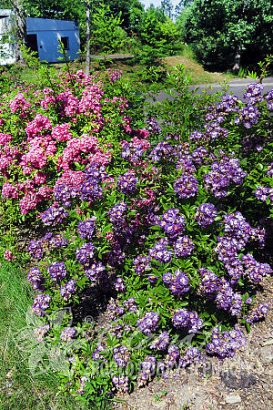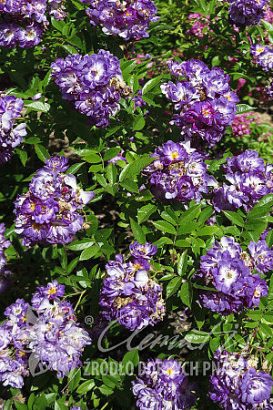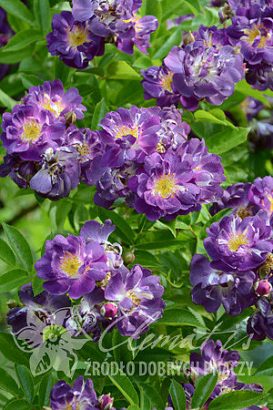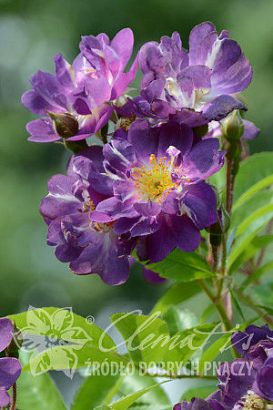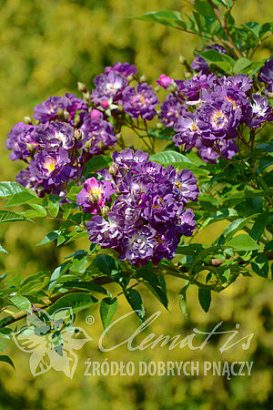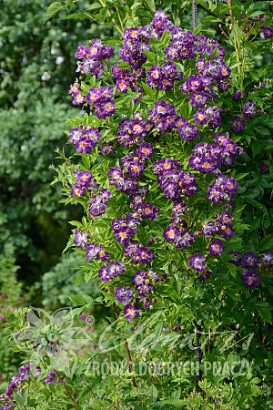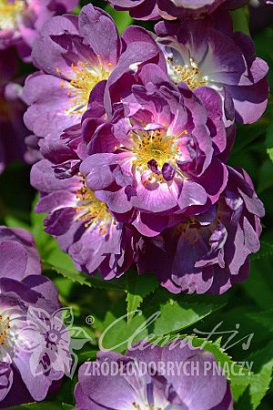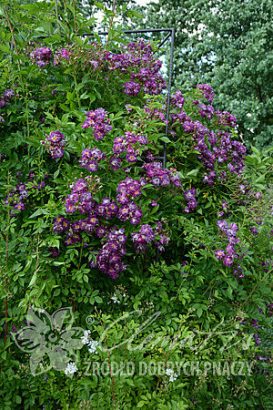Rosa ‘Veilchenblau’
Climbing rose 'Veilchenblau'| 装饰形式 | flowers |
|---|---|
| 花色 | violet |
| 植株高度 | 2 m |
| 花期 | VI |
| 年增长率 | 1-2 m |
| 种植方位 | sun, 3/4 sun, 1/2 sun, 1/4 sun |
| 修剪方式 | Zones 6 - 8 |
A very fast-growing cultivar of numerous, highly original, beatifully scented violet flowers. Robust and highly resistant. The shoots have nearly no prickles.
WHAT IT LOOKS LIKE: Flowers small, violet with white centre and yellow anthers. They smell beautifully of apples and lily of the valley. In bloom the shrub turns into a wall of flowers. Flowering for about 4 weeks in June. Shoots have nearly no prickles.
HOW IT GROWS: In Poland the shrub reaches 4 m height. In warmer regions it may grow twice as high. Fast-growing – a couple of year old shrub can produce 2 m long shoots in one season.
WHERE TO PLANT: Grows well in any type of soil, however it does not tolerate compacted and heavy or very sandy and dry soil. Thrives in light, moderately permeable ground of slightly acidic or neutral pH. Requires a sunny site, but it copes well in semi-shade. Plants grown from their own roots do not cause problems with the rootstock shoots. Fully frost hardy (zone 6).
HOW TO PLANT AND MAINTAIN: Before planting immerse the plant container in water for 10-30 min. Place the root ball in a 40 x 40 x 40 cm hole with a 10 cm layer of well-rotten manure or compost, 0.5-1 cm deeper than it was before. Fill the hole with fertile soil. Does not require regular pruning. After blooming the side shoots can be pruned above the third node. To rejuvenate the plant, the oldest shoots can be cut back over the ground or above a strong side shoot. This stimulates the plant to produce new strong guiding shoots.
HOW TO APPLY: Climbing roses are often planted along supports, walls, gates, fence poles. They can be located by an entrance or near a playground, as the shoots have no prickles. The cultivar tolerates semi-shade, therefore it is recommended for planting along northern walls. Birds feed on its small fruit.
ORIGIN: Introduced by Johann Christoph Schmidt, Germany, 1909.

